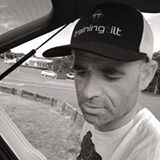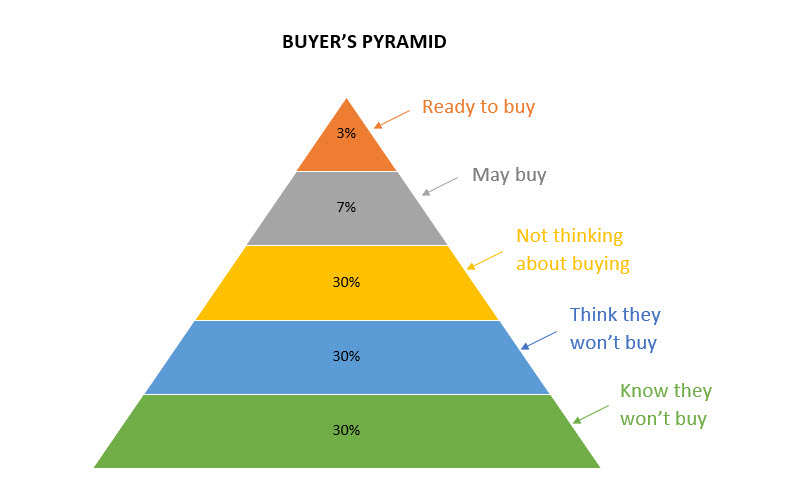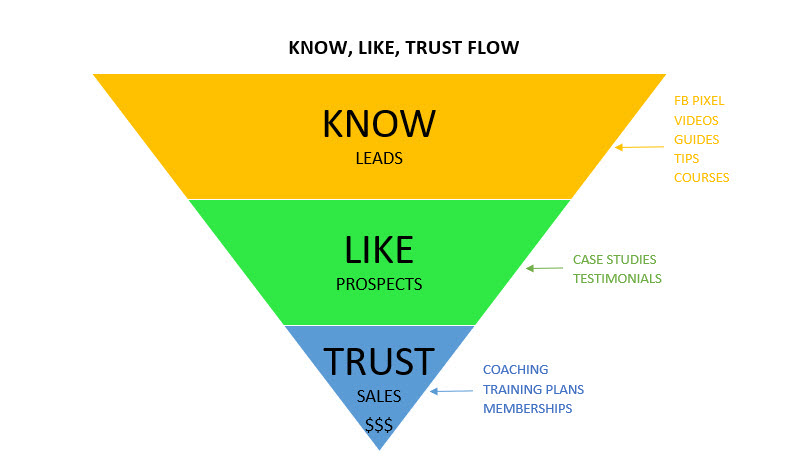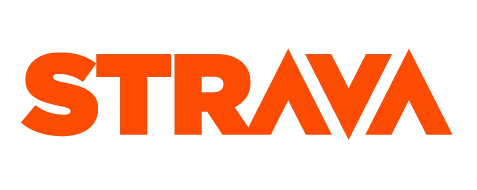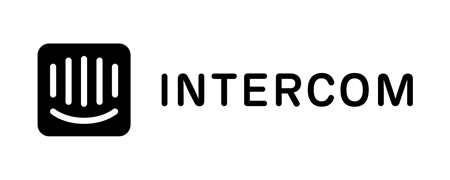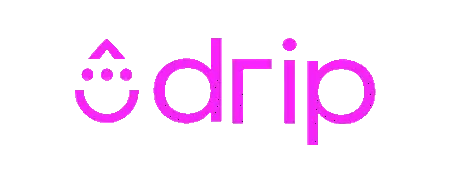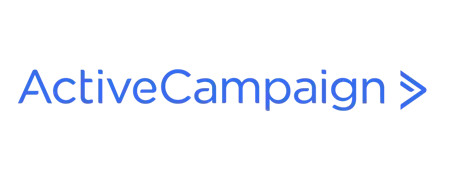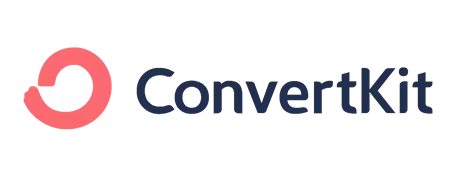You can read the full post or if you'd prefer watch the 8-minute white board video that covers all the same content.
Video Version
Text Version
I was out in the Waitakere Ranges here in Auckland, riding gravel roads and I was thinking about how a lot of coaches are struggling to sell stuff online via their website.
Whether that be digital products like training plans or even just their 1-on-1 coaching services it doesn't really matter, the problems are the same.
So, I'm going to discuss this in more detail with a marketing concept called the "Buyer's Pyramid". This concept can help us to understand the process of what a visitor on your website goes through before they decide to make (or not make) a purchase.
The Buyers Pyramid
Basically, this concept says that all visitors to your triathlon or endurance coaching website can be separated into five categories shown in the diagram and explained below:
1. 3% - Ready to Buy
Of all the visitors to your website, only 3% are ready to buy a product or service.
2. 7% - Might Buy
Even though they are not actively looking. 7% of visitors to your website are open to buying something or applying for your services.
3. 30% Not Thinking about Buying
30% are not thinking about buying – so they just might be visiting or curious.
4. 30% Think They Won't Buy
30% are going there, they want to have a look, but they don't think they're going to buy something.
5. 30% Know They Won't Buy
And 30% know they won't buy, so they're just going to look. They know that there's no way they're going to buy something off this website todaw, the problem with this is most triathlon, running or endurance coaching websites are optimized to capture only the first category, the 3% of visitors ready to buy. So, on the home page, there's some links to some products, some information about the business and their services and the ability to apply for coaching services
So, the bigger problem with that is there is, of course, 97% of other people who are visiting your website who you just lost because there is no way for them to be captured by the website. So, you might think "Okay, they're not ready to buy anyway so it doesn't matter." But these are actually stages, so people aren't fixed to these categories, they are just within one at any one time.
So, as the website owner, it is your job to move these people from these categories up to the category where they are ready to buy – a journey. So, how do you do that?
Well, what you need to do first is to flip that pyramid upside down.
So, you might have seen something like this before in some marketing videos or something that describes as leads, prospects and sales. This can be called a sales funnel or a customer journey.
The idea is everyone comes in at the top and they make their way down to the bottom, hopefully to a point where they will purchase something or sign up for some of your services.
But instead of leads, prospects and sales, I like to think about it as know, Like, and Trust.
Know Like and Trust Flow
No-one is going to buy something from you, from your coaching website, before they know, like and trust you. It's unrealistic to think that someone is just going to come onto your website – they don't know you, and just buy something from you.
So, the 3% in the "Ready to Buy" stage typically already know, like and trust you, and that's why they're already in that position.
What you need to do is take as many of these people as possible, at the top of the funnel, and get them to know, like and trust you until they are ready to purchase.
In this top stage, when visitors first come to your website – you need to try and optimize to capture as many of them as possible.
You have probably heard of the marketing strategy around how you should give stuff away for free. You may have thought it's a good idea, but maybe not entirely understood the power of that.
The power is the ability to move people into this ready to buy position by first offering them something of value, helping as many people as possible with your knowledge and expertise.
Things you could give away for free are:
Videos
Guides
Tips
Courses
Specific examples:
A guide to improving your swimming technique
A 5-part course on how to get faster at triathlon.
A race week checklist.
An insiders guide to a specific race course or event.
For the best ideas for your business, think about your target audience, what problems they're having, what they're struggling with. Create some content for that and give it away for free in exchange for their email address or contact details.
If you can collect a bunch of leads based on that free stuff, now you're into the "Know, Like and Trust Flow". You want to nurture them down through that funnel by helping them solve their problems and answer the questions they are asking in their heads.
After that, they become leads – and we want to turn them into prospects by helping them even more and building more trust.
To do that, we can add additional stuff like case studies and testimonials – examples of how we've helped other people like them, how videos of your current customer's got results thanks to you. That can go out through the email system that you used to collect the lead. You don't need to do it through an email system, you could also do it through something like Facebook advertising by using your Facebook Pixel instead of an email opt-in. I'd suggest do both. But the way the Facebook Pixel works is you can install it on your website and then you can create custom audiences in Facebook account that includes anyone who's visited my website in the last 21 days.
Then you can start showing only those visitors the videos or testimonials of your case studies via Facebook and Instagram ads. You continue that flow to get people to know, like and trust you. If you've helped other people similar to them, it's going to be really helpful. They're going to start thinking "Okay, they've helped Steve and Steve is a really similar person to me. So, they could help me."
That's when they start to become prospects. The more and more stuff they see in this stage the better – you can send them more guides and more videos and more help. You help them as much as you can and don't hold back on that, just keep helping and helping, and at some point, a lot of them will make their way to the point where they do know, like and trust you. Then you can deliver to them some stuff through email, Facebook ads, Instagram ads directly related to your products and services – by that point they're ready to purchase something.
They might have come to your website 3 weeks ago when they were in the "Not thinking about buying" or "know they won't buy" category, but after receiving all of this value from you, now they're in the "may buy" or "ready to buy" category.
They will shoot back to your website, make a purchase, which they never would have done if you optimize only for the 3%.
That's the key, really. You don't want to miss out on this 97% - sure, you're not going to get all of it, but you want to get well over the 3% you would normally get if you didn't optimize the "know, like and trust".
Conclusion
So, that's it. I will finish with that. As much as you can develop using systems and tools, to get more people to know, like and trust you while you're helping them, the more sales you will make at the end of the day.
Suggested Reading
I've written a few other posts that offer more detail. The importance of structuring your marketing into steps from my post Three-step marketing for endurance coaches and a way of figuring out what sort of content you should add to your site based on what your customers are searching for on Google. And also a post explaining why customers take a long time to buy and how to best leverage it with retargeting.
Take our Free "Authentic" Marketing Course for Coaches
Designed for endurance sport coaches. Marketing doesn't need to be pushy. The best marketing simply creates a win-win relationship between you and your customers. Take the simple 6 part course to learn more.

